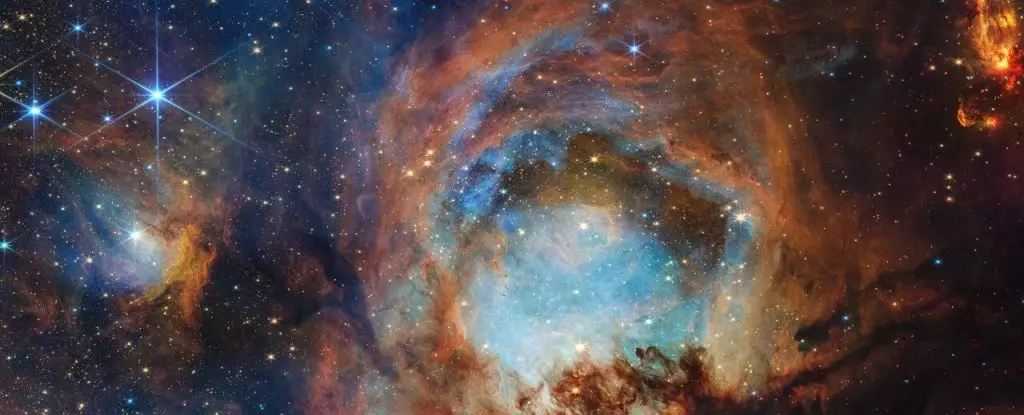The universe remains an awe-inspiring enigma, filled with celestial phenomena that challenge human understanding and imagination. Among these mysteries, star formation stands as one of the most intricate and captivating processes. Thanks to groundbreaking advancements like the James Webb Space Telescope (JWST), our window into these cosmic nurseries has widened exponentially. The recent imagery of the Cat’s Paw Nebula exemplifies how this instrument is redefining our grasp of stellar birth and the universe’s hidden beauty.
The Cat’s Paw Nebula, situated approximately 4,000 light-years away in the constellation Scorpius, resembles an enormous set of toe beans, extending beyond mere whimsy into the realm of scientific importance. Its dense clouds of gas and dust serve as the stellar incubators where new stars are born. However, these regions are cloaked in opacity to visible light, concealing the dynamic processes within. It is precisely here that JWST’s infrared capabilities shine—allowing us to peer through layers of cosmic dust that have long obscured our view.
Infrared Vision and the Revelation of Stellar Genesis
Unlike traditional telescopes, JWST’s infrared sensors can detect the heat signatures emitted by nascent stars and their surrounding materials. This attribute unlocks a detailed view into the mystery of star formation, revealing stages that were previously hidden from view. The latest image showcases this power vividly, illustrating a complex ballet of gas, dust, and emerging stars.
Within the nebula, various structures tell different parts of the star formation story. The so-called “Opera House,” for example, is a luminous, yellow star in its late formation stage, actively dispersing the dust that once concealed it. Nearby, fiery red blobs indicate regions where gravity continues to pull collapsing matter into dense knots—potential cradles for new stars. These glimpses provide a snapshot of a transformative process, where chaos gradually orchestrates the birth of stellar giants.
The nebula’s glowing blue hues, caused by light scattered from fully formed stars that have cleared their surroundings, contrast sharply with the dense, dark filaments still pregnant with potential. These denser regions suggest that the earliest stages of star creation—when gas and dust coalesce—are still unfolding, offering scientists vital clues about the initial conditions for star birth.
A Window into Cosmic Evolution and Our Place in It
This imagery is more than just stunning astrophotography; it is a testament to human curiosity and resilience in deciphering the universe’s deepest secrets. JWST’s ability to penetrate dusty, opaque environments enables scientists to construct a more cohesive understanding of star formation’s lifecycle. It hints at a universe that, while seemingly chaotic and incomprehensible, is governed by fundamental laws of physics that we are only beginning to comprehend.
Furthermore, the nebula serves as a mirror to our own origins—tracing back to a time when the cosmos was similarly bustling with proto-stellar activity. By understanding these processes, we gain insight into how solar systems—including our own—came into existence. These revelations foster a profound appreciation for our place within this vast, ongoing cosmic story.
The JWST’s new image of the Cat’s Paw Nebula exemplifies humanity’s relentless pursuit to uncover the universe’s deepest mysteries. It transforms distant, dusty clouds into vibrant arenas of creation, allowing us to see the universe’s raw, unpolished beauty. Each infrared shadow and glow is a reminder that the cosmos is not just a spectacle but a living, breathing tapestry of life—and we are fortunate witnesses to its unfolding narrative.

